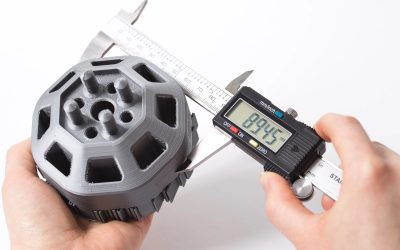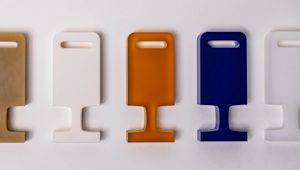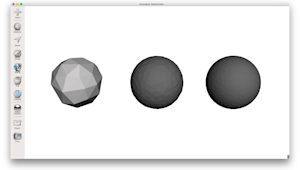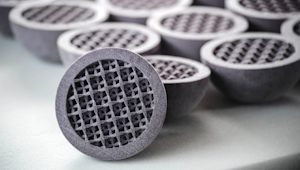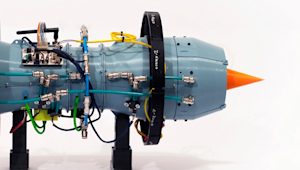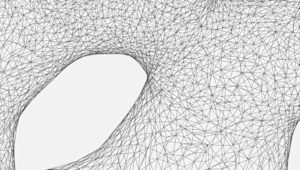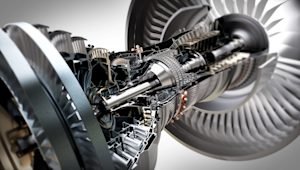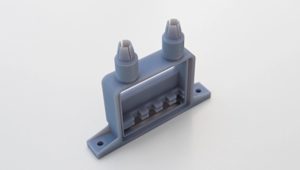Dimensional accuracy in 3D printing refers to how closely the measurements in your CAD design match those of the part once it’s printed. It’s a key consideration if your components need to fit together precisely or if you’re manufacturing sizable assemblies.
Many factors can positively (or adversely) affect the dimensional accuracy of your 3D printed parts, including the quality of your filament, thermal contraction and/or over- or under-extrusion (for FDM specifically). Other factors, including the quality of the machine, machine calibration, quality of resin and post-processing, can also affect the dimensional accuracy of your parts.
When it comes to achieving dimensional accuracy, each additive manufacturing technology has its strengths and weaknesses. The two most important factors that govern whether your printed part will match its design specifications, apart from the technology itself, are its design and materials.
In this article, we’ll compare the expected dimensional accuracy of the 3D printing technologies we offer to help designers and engineers choose the right solution for their applications.
How do materials affect dimensional accuracy?
Accuracy in 3D printing depends in part on the materials you use. In many cases, enhancing specific material properties will mean sacrificing accuracy. For instance, a standard SLA resin will produce more dimensionally accurate parts than a flexible resin.
For parts where high accuracy is critical, we recommend you use standard printing materials. High-quality, industrial materials, such as Nylon and Ultem, are both strong and accurate will be more expensive.
How do you measure dimensional accuracy in 3D printing?
To quantify the dimensional accuracy of 3D printed parts, we use the following parameters.
-
Dimensional tolerance - quantitative values from machine manufacturers and material suppliers that state the expected accuracy of parts. These are defined with respect to well-designed parts on well-calibrated machines.
-
Warping or shrinkage - the likelihood a part will warp or shrink while printing. While design plays a big role in determining whether parts will warp or shrink, some processes are inherently more prone to warping or shrinkage than others.
-
Support requirements - for many 3D printing technologies, the number of supports you have to remove after printing will affect the accuracy of a part’s surfaces and features.
Dimensional accuracy of FDM 3D printing
FDM (fused deposition modeling) is ideal for low-cost prototyping, where form and fit are more important than function. It’s the most accessible form of 3D printing, and one of the most widely used across most industries.
FDM machines produce parts by extruding a thermoplastic material onto a build plate one layer at a time, from low-cost PLA or ABS for prototyping to industrial aerospace parts made from high-strength thermoplastics like Nylon and Ultem.
Typically, small parts are limited by extrusion spot size and gantry positioning accuracy. On the flip side, large parts are limited by shrinkage due to non-uniform cooling that comes from the temperature gradient mid-build.
For large parts, this can lead to big variations in temperature across the build platform. As different areas of the part cool at different rates, internal stresses cause the print to deform, leading to warping or shrinkage. Solutions like printing rafts, heated beds and radii at sharp edges and corners help to reduce this effect.
Lastly, FDM parts require support structures. Even though build prep software takes into account the supported sides and will often make adjustments to hit the ideal dimensions, post-processing can introduce some dimensional inaccuracy for parts that require a significant amount of support material.
Of course, different materials are more prone to warping than others. ABS is more susceptible to warping than PLA, for instance.
Finer points for dimensional accuracy of FDM
| Parameter | Finer details |
|---|---|
| Dimensional tolerance | prototyping (desktop): ± 0.5% (lower limit: ± 0.5 mm) industrial: ± 0.15% (lower limit: ± 0.2 mm) |
| Shrinkage/warping | Thermoplastics that require a higher print temperature are more at risk. Adding a radius on the bottom edge in contact with the build plate or a brim is recommended. Shrinkage usually occurs in the 0.2 - 1% range depending on the material. |
| Support requirements | These are essential to achieve an accurate part. Required for overhangs greater than 45 degrees. |
Curious about the cost and material options for FDM?
Dimensional accuracy of SLA 3D printing
SLA (stereolithography) printers use lasers to UV cure specific areas of a resin tank to form solid parts one cross-section at a time. These cured areas, however, are not at full strength until post-processing with UV. As well, the typical printing angles and orientations of SLA can lead unsupported areas to sag.
This effect is especially prevalent in taller SLA parts, which have dimensional discrepancies thanks to the layer-by-layer build process. Dimensional discrepancies can occur because of the peeling process used by some SLA printers.
Dimensional discrepancies can also occur because of the peeling process used by some SLA printers. The pulling force during the peeling process can cause the soft print to bend which again can accumulate as each layer is built up.
Resins that have higher flexural properties (less stiff) are at a greater risk of warping and may not be suitable for high-accuracy applications.
SLA parts also require the parts to be anchored to the build plate and that angles lower than 45 degrees be supported. Support removal from SLA parts can often be considered an art and requires highly skilled technicians to remove supports and provide light sanding to those surfaces.
Finer points for dimensional accuracy of SLA
| Parameter | Finer details |
|---|---|
| Dimensional tolerance | Prototyping (desktop): ± 0.5% (lower limit: ± 0.10 mm) Industrial: ± 0.15% (lower limit: ± 0.01 mm) |
| Shrinkage/warping | Likely for unsupported spans. |
| Support requirements | Essential to achieve an accurate part. |
Curious about the cost and material options for SLA?
Dimensional accuracy of SLS and MJF 3D printing
SLS (selective laser sintering) produces parts with high accuracy and can print designs with complex geometry. A laser selectively sinters powder one layer at a time to form a solid part.
HP’s Multi-Jet Fusion ( MJF) is similar to SLS, in that they both use heated build chambers, are powder-based and can produce parts with high accuracy using production-grade powders. The biggest difference between the two technologies is that MJF uses a solution to bind the powder and a heat lamp to cure the powder layer by layer.
To restrict the likelihood of parts warping or shrinking during printing, MJF and SLS printers use heated build chambers that heat up the powder to just below the sintering temperature.
MJF and SLS parts do not need to be anchored to the build plate and are suspended in the powder during the build. The heated powder allows for slower temperature changes and aids in dimensional accuracy. This results in temperature gradients in large SLS and MJF parts where the bottom of the part has cooled while the recently printed top layers remain at an elevated temperature. To further mitigate the likelihood of warping occurring parts are left in the powder to cool slowly (often for 50% of the total build time).
Finer points for dimensional accuracy of SLS/MJF
| Parameter | Finer detail |
|---|---|
| Dimensional tolerance | ± 0.3% (lower limit: ± 0.3 mm) |
| Shrinkage/warping | Shrinkage usually occurs in the 2 - 3% range however most SLS and MJF print providers allow for this in the design. |
| Support requirements | Not required. |
Curious about the cost and material options for SLS and MJF 3D printing?
Our SLS 3D printing services Our MJF 3D printing services Get a free, instant quote
Frequently asked questions
Why is dimensional accuracy important?
Dimensional accuracy is critical for 3D printed parts in many cases, including if you are creating components that need to fit together or are producing vast assemblies.
How can you improve dimensional accuracy?
There are several ways to improve the dimensional accuracy of your 3D printed parts. One way is to divide a larger object into smaller components, which increases the dimensional accuracy of every piece.
Which 3D printer offers the highest accuracy?
For high accuracy, SLA is recommended for parts smaller than 10 x 10 x 10 cm and SLS for parts with dimensions greater than 10 x 10 x 10 cm.
What are dimensional tolerances?
Dimensional tolerances are the numerical ranges of measurements that you assign to the dimensions of a part. These indicate how much a manufacturer can differ from the design’s nominal measurement. They are essential to the manufacturing process.






